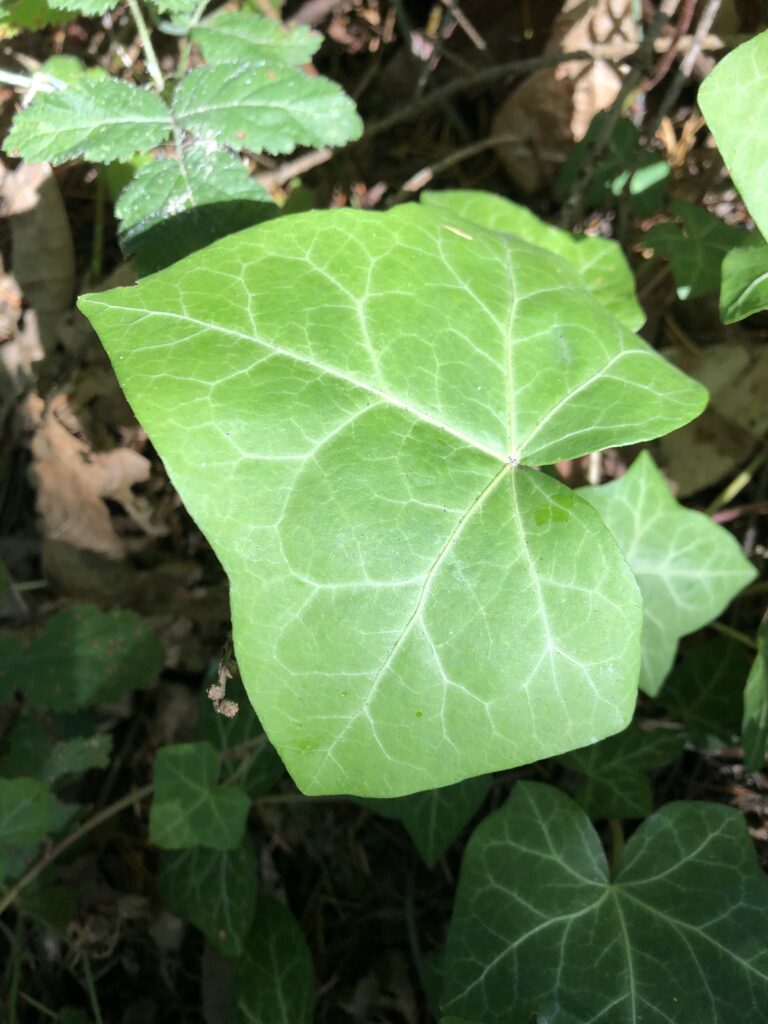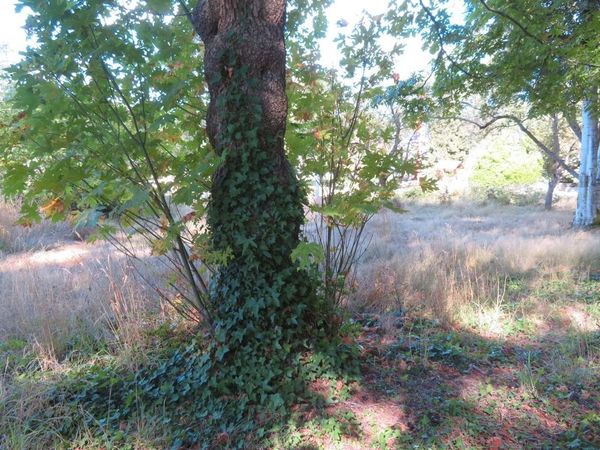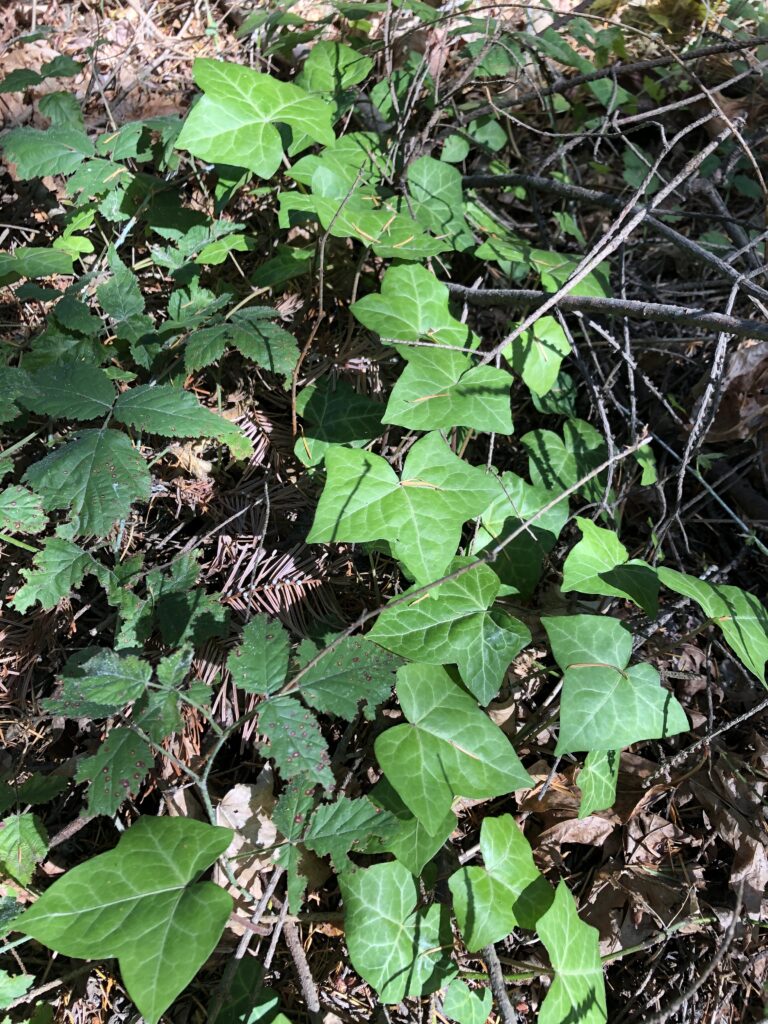English Ivy (Hedera Helix)

English ivy is an invasive evergreen vine that is found along the west coast of North America, from Oregon to British Columbia. It has long stems that can trail along the ground or climb up trees, fences, or walls. The leaves are large and waxy. Juvenile ivy has leaves that are divided into 3-5 lobes, while the adult form has unlobed leaves.

English ivy was introduced to North America from Eurasia, through its use in gardens. It is often used as an ornamental ground-cover plant, or as a covering for stone or brick walls. However, in forest ecosystems, English ivy smothers native ground-cover species, and can also weaken or kill trees by blocking light from reaching the leaves.

English ivy can reproduce using seeds, but it mainly spreads by sending out long vines, which grow away from the original plant and produce roots. Even small fragments of stem can root and become a new plant, which makes English ivy very difficult to eradicate. The best method to remove English ivy from an area is to pull up the vines by hand. The plant material that is removed should be bagged and disposed of in a landfill to prevent the ivy from spreading.
For more information, visit E-Flora BC or the Invasive Species Council of BC website.


